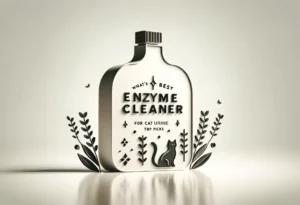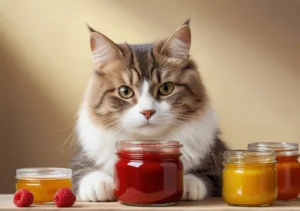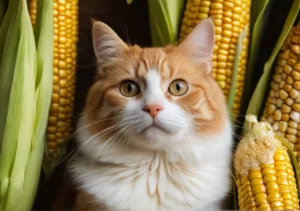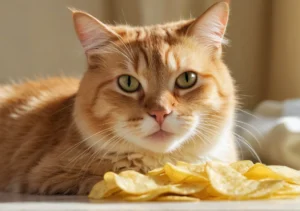Cats and ice cream may seem like a cute pairing, but there’s a reason why you should think twice before giving your feline friend a taste. So, why can’t cats eat ice cream?
Cats lack the necessary enzymes to properly digest dairy products like ice cream, leading to potential digestive issues. Let’s explore the reasons why cats should steer clear of this sweet treat.
The Lactose Intolerance Factor
Did you know that cats are lactose intolerant? It’s true! Lactose, the sugar found in dairy products like ice cream, is actually challenging for cats to digest. Cats lack the necessary enzyme, lactase, to properly break down lactose, leading to digestive issues.
When cats consume ice cream or other dairy treats, they can experience bloating, gas, diarrhea, and vomiting. This is their way of saying, “Thanks, but no thanks!” So, next time you’re enjoying a scoop of ice cream, remember to keep it all to yourself and not share with your feline friend.
Potential Digestive Upsets
Indulging in a tasty bowl of ice cream might sound tempting, but for your furry friend, it’s a different story. Cats’ digestive systems are sensitive, and ice cream can wreak havoc on their stomachs.
When cats consume ice cream, they may experience upset stomachs, diarrhea, and vomiting. These digestive issues can leave your furry friend feeling uncomfortable and unwell. To keep your cat happy and healthy, it’s best to stick to cat-friendly treats and avoid sharing your ice cream with them.
Remember: Cats and ice cream don’t mix well, so save the scoops for yourself and give your feline friend something more suitable for their delicate digestive system.
Toxic Ingredients
When it comes to why cats can’t eat ice cream, it all boils down to the ingredients. Ice cream contains ingredients that are harmful to your feline friend, such as sugar and artificial sweeteners. Cats lack the necessary enzymes to properly digest these ingredients, which can lead to digestive issues, obesity, and even diabetes in the long run.
Alternative Treat Options
If you’re looking for safe and cat-friendly treat alternatives, look no further than plain canned pumpkin or cooked salmon. These options are not only easy on your cat’s stomach, but also provide nutritional benefits. Just be sure to feed them in moderation to keep your furry companion happy and healthy.
Signs of Dairy Sensitivity in Cats
Have you noticed your feline friend having tummy troubles after sneaking a lick of your ice cream? Vomiting, diarrhea, or even skin irritations could be signs that your cat is sensitive to dairy. Cats lack the necessary enzymes to properly digest lactose, the sugar found in milk products like ice cream. Therefore, indulging in this sweet treat can lead to digestive issues and discomfort for your furry companion. To keep your cat feeling their best, it’s best to steer clear of offering them dairy-based foods like ice cream.
Importance of a Balanced Diet
While a tiny taste of ice cream might seem harmless, cats require a diet tailored to their unique nutritional needs. Providing your feline friend with a balanced and species-appropriate diet is crucial for their overall health and well-being. High-quality cat food that meets their protein, fat, vitamin, and mineral requirements is essential for optimal feline health. Remember, a happy and healthy cat starts with a nutritious diet, so opt for cat-friendly treats and avoid sharing human foods like ice cream with your furry friend.
Additional Tip:
– Consider incorporating cat-safe fruits and vegetables as occasional treats for your cat to provide variety and additional nutrients in their diet.
Homemade Cat Treat Recipes
If you’re looking to spoil your feline friend with some homemade treats, it’s essential to stick to recipes that are safe for them to consume. Cats lack the necessary enzymes to digest dairy products like ice cream properly. This can lead to gastrointestinal issues such as stomach upset, diarrhea, or even more severe conditions. Instead of sharing your ice cream with your cat, here are a couple of easy and nutritious homemade treat recipes you can try:
- Tuna Treats: Mix canned tuna (in water) with a bit of oat flour and an egg, then bake into small bite-sized treats.
- Salmon Delights: Combine canned salmon (in water) with a touch of whole wheat flour, shape into small balls, and bake until golden brown.
Remember, moderation is key when treating your cat, so offer these homemade snacks as an occasional delight rather than a daily indulgence.
Fun Cat Trivia
Cats are curious creatures, but when it comes to ice cream, it’s best to keep it out of their reach. While we might enjoy a scoop of ice cream on a hot day, our feline friends should steer clear of this frozen treat. The main reason cats can’t eat ice cream is because they are lactose intolerant. As kittens, cats produce an enzyme called lactase that helps break down lactose in their mother’s milk. However, as they mature, many cats lose the ability to produce this enzyme, making them unable to digest dairy products properly.
Interestingly, cats are obligate carnivores, which means their diet should consist primarily of meat. So instead of reaching for the ice cream, consider offering your feline companion some cat-friendly treats like cooked chicken or fish to satisfy their cravings. Remember, understanding your cat’s dietary needs is essential for keeping them healthy and happy.
Alex, a passionate animal lover, has experience in training and understanding animal behavior. As a proud pet parent to two dogs and three cats, he founded AnimalReport.net to share insights from animal experts and expand his knowledge of the animal kingdom.




